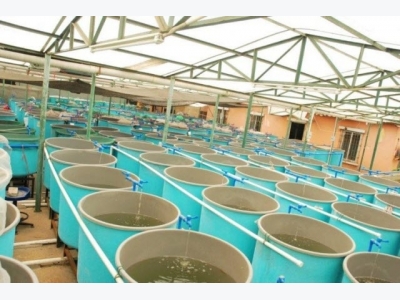Seaweed supplementation said to boost immunity in fish

© iStock.com/defun
Adding supplemental seaweed to farmed fish diets could boost immune functioning and antioxidant responses.
A group of researchers in Portugal and Spain explored the use of three different seaweed phyla in the diets of farm-raised European seabass. The group was looking for growth and immune system responses to the inclusion of seaweed in the diet.
“The objective of this study was to examine the effect of dietary seaweed supplementation on growth performance, digestive capacity, and immune and stress responsiveness, using seabass (Dicentrarchus labrax) as an experimental model,” said the researchers. “Specifically, we tested the hypothesis that seaweeds could be used to enhance immune and antioxidant defenses in fish, without growth impairments.”
In the trials, the supplements were seen to have an effect on fish production, they said. “Overall, our results indicate that the use of dietary seaweed supplementation improves immune and antioxidant responses in European seabass without compromising growth performance,” they added.
Why seaweed
Different types of seaweed have been considered to offer essential nutrients for animals, said the researchers in their report.
In lab trials, seaweeds from the Chlorophyta, Rhodophyta and Phaeophyta species have demonstrated antimicrobial and anti-viral abilities, along with antioxidant traits, they said.
In feeding studies with pigs, strains of Phaeophyta have contained laminarin and fucoidan, boosted gut health and improved growth performance for starter and weaned pigs, they said. “In ruminants subjected to pre-slaughter stress conditions, the dietary supplementation with brown seaweed (Ascophyllum nodosum) increased the antioxidant status by lowering lipid peroxidation (LPO), increasing glutathione peroxidase activity, and reducing stress indicators ( Kannan et al., 2007 and Archer, 2005),” they added.
In crustaceans, seaweed varieties have been found to stimulate the immune system against certain diseases and in fish the plant can raise levels of lysozyme, said researchers.
However, when used in aquafeed for finfish growth results have been inconsistent, they said. Some researchers have seen growth benefits in red tilapia and red seabream and others have seen impaired growth for fish like the thick-lipped grey mullet.
Lab based studies also have indicated that inclusion of seaweed extract or supplements may benefit fish’s immune systems or help mitigate diseases, but more in-feed studies are needed, they said.
“Recent results observed in Nile tilapia (Oreochromis mossambicus) have demonstrated that the administration of extracts and products from red (Gracilaria folifera) and brown (Padina gymnospora and Sargassum cinereum) seaweeds may be effective as therapeutic and prophylactic treatments against Pseudomonas spp. infection (Thanigaivel et al., 2015a and Thanigaivel et al., 2015b),” said researchers. “Additional research efforts are undoubtedly required to carry out in vivo studies, which are scarce in fish, to accurately evaluate the potential of seaweed application as a nutritional tool (Makkar et al., 2015).”
Use of seaweed as a functional ingredient in aquafeed could benefit aquaculture as some stresses including crowding, size sorting and transport are indicative in production, they said.
Experiment
In the experiment, 408 juvenile seabass were given one of eight diets for a period of 84 days, said the researchers. Fish were divided into 24 tanks in groups of 17.
The diets included an un-supplemented control treatment and feeds with either 2.5 or 7.5% dry matter basis (DM) of Gracilaria, Ulva or Fucus, they said. An additional diet mixed a 2.5% amount of all three seaweeds.
At the end of the trial fish were weighed and selected fish had their body tissues harvested, they said. Some were used for whole body composition analyses.
Liver and viscera were used to generate hepatosomatic (HSI) and viscerosomatic (VSI) indexes and intestine, blood and liver were analyzed, said the researchers.
Results
Inclusion of the seaweed supplements did not alter the growth rate for fish or HSI and VSI, said the researchers. Fish getting seaweed supplements tended to have a higher final body weight than the control group.
Voluntary feed intake, the feed conversion ratio (FCR), protein efficiency ratio (PER) and whole body composition in terms of macronutrients and energy also were similar, they said in the report.
“A dietary 2.5% incorporation level improved innate immune system indicators,” said the researchers. “Overall, our results indicate that seaweed supplementation in aquafeeds may be a valuable tool to increase the immunocompetency of valuable aquaculture fish species, without compromising growth performance.”
Lipase activity was much higher in fish getting the mixed diet, they said. Glutathione peroxidase levels were raised in fish getting the mix diet or supplemental Gracilaria or Ulva.
Additionally, the innate immune system also was altered in fish getting supplemented diets, they said. Fish getting 2.5% Ulva diets had more LYS than fish on the control diet or getting the 7.5% supplement.
Authors: Maria João Peixoto, Emílio Salas-Leitón, Luís Ferreira Pereira, Augusto Queiroz, Fernando Magalhães, Rui Pereira, Helena Abreu, Pedro Alexandre Reis, José Fernando Magalhães Gonçalves, Rodrigo Otávio de Almeida Ozório,
Related news
 The limits of stocking rates for aquaculture
The limits of stocking rates for aquaculture In almost every form of aquaculture, stocking rates are invariably higher than those found in nature. Fish are confined at high density in a small space
 How to Build a Farm Pond
How to Build a Farm Pond Farmers build ponds for many reasons: Irrigation, water for livestock, fire protection, erosion control, aquaculture, wildlife value, recreation and aesthetics
 Pond Construction: Some Practical Considerations
Pond Construction: Some Practical Considerations Conservative estimates place the correct number of farm ponds in Virginia at over 50,000. These ponds range in size from less than one acre to over 30 acres in